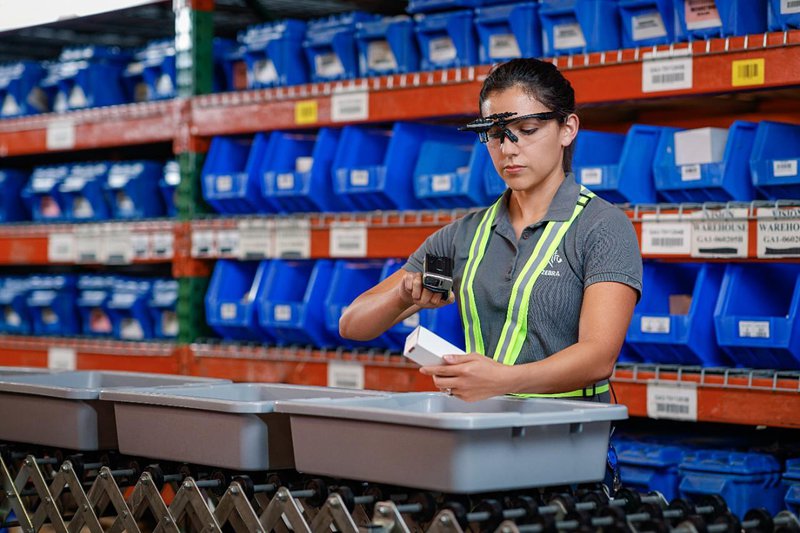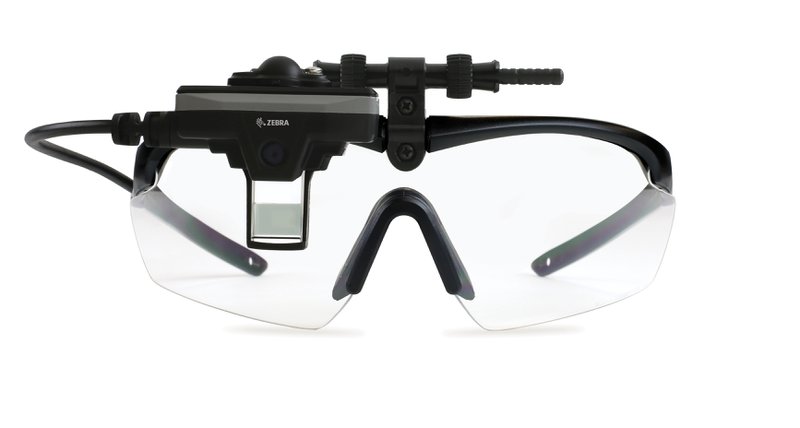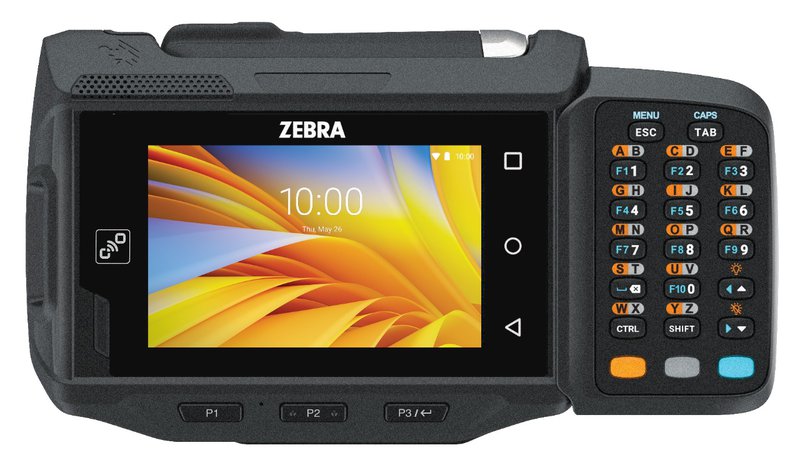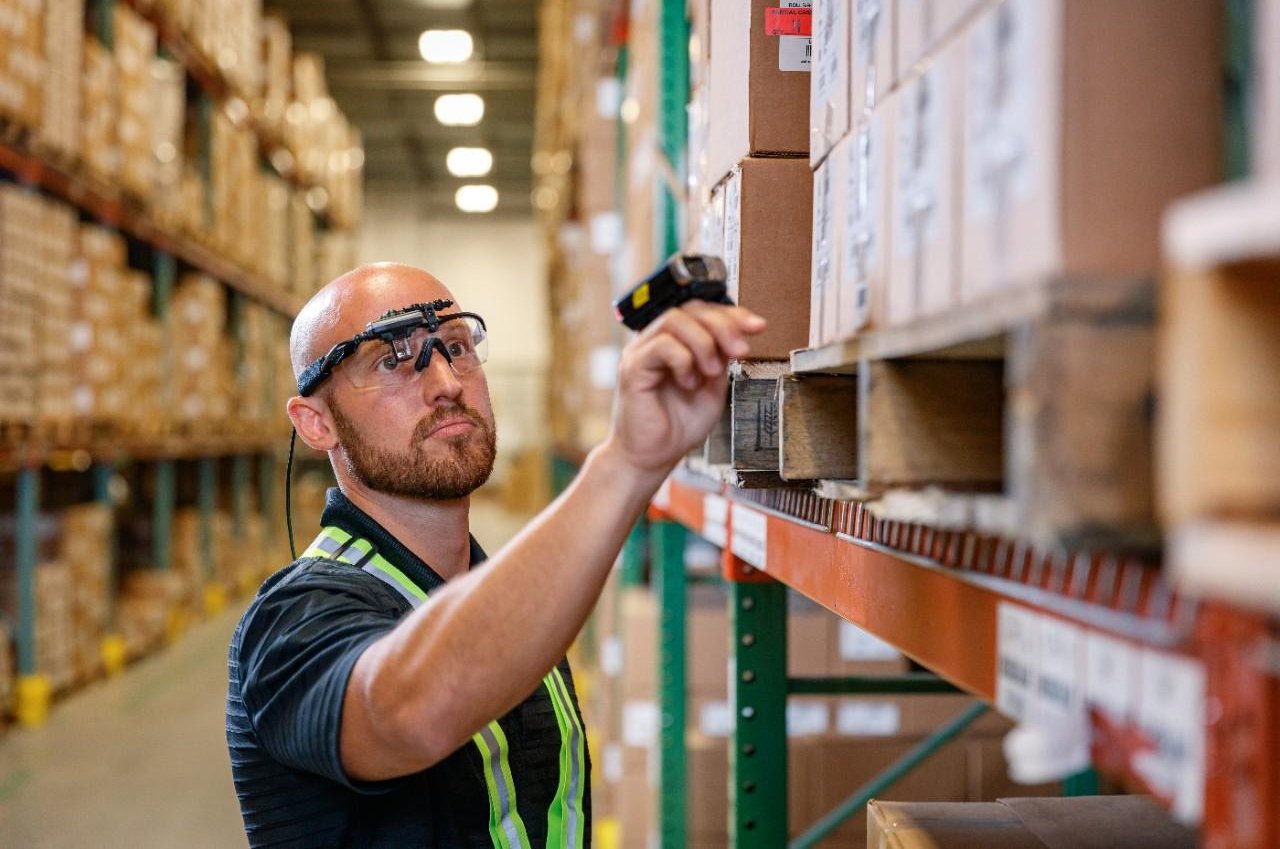For many people, the phrase ‘wearable technology’ conjures up images of walkers and runners checking their wrists and logging steps. While it’s true that the fitness industry has seen a wearable devices revolution, it’s in the world of business – and particularly logistics – that the technology is at its most pioneering and transformative.
Rugged wearables such as scanners, headsets, arm-mounted computers and smart glasses are helping businesses speed up operations, use data more effectively, protect employees and even integrate human and robot labour.
Supply chain experts MHI predict that 70% of warehouse facilities will adopt some form of rugged wearables by 2023. Meanwhile, a report by ResearchAndMarkets.com suggests that the industrial wearables market is likely to grow from $1.64 billion in 2018 to a projected $2.78 billion by 2024. For many businesses who want to keep up, it isn’t a question of why invest in wearable devices but when.
Here’s three compelling ways wearable technology is benefitting logistics businesses.

1) Rugged wearables are increasing productivity
While much wearable tech appears pioneering or even futuristic, wearable barcode scanners have, in fact, been bringing efficiencies to warehouses for many years. They are available as wrist, ring, or glove-mounted models. Once paired with a wearable computer, they help logistics workers scan barcodes quickly. They also help workers pick or place items with an unprecedented level of accuracy, informing them if they have chosen the correct item or the right number of items, or placed an item correctly. Back in 2011, UPS used radio frequency-enabled ring scanners in its international supply chain operations and found packages travelled more efficiently and reliably through its network.
The key to improving efficiency in any organisation is to get the right information to the right workers at the right time, so they can take swift and accurate actions. Paired with arm-mounted computers, voice headsets provide real-time feedback to warehouse employees, giving them live instructions and helping them to log reports quickly (and without typing) as they complete actions.
One of the beauties of these technologies is the way they can free up employees to have both hands available to lift boxes, pack items etc, while receiving and providing information. When you compare this approach to traditional methods of repeatedly looking down at printed orders or picking up and putting down a handheld device, the benefits are obvious.
However, when using the above technologies, a worker still might need to look down at their wrist when they need to retrieve information about their next pick. In other words, they have to stop what they are doing. Wearable glasses solve this problem by providing information in front of a worker’s eyes; they never have to break off their job to check information – they can keep their eyes up and ahead at all times.
In 2017, DHL adopted pioneering augmented reality (AR) tech to smart glasses to introduce efficiencies to its supply chain. The glasses interact with barcodes to provide vital information for increasing accuracy and the timeliness of orders. The company reported worker productivity increased by 15% as a result.

2) Wearable devices are keeping employees safer
As well as providing employees with data, wearables play a useful role in tracking their movements and behaviours. Managers can see where staff are in a warehouse and use the information to direct the flow of labour and resources to where it is needed most.
This trackability also shows huge potential with regard to worker health and wellbeing. In 2013, BP America introduced a pioneering programme providing employees with FitBit bracelets that collected data relating to fitness, fatigue levels, sleep quality and location.
While not mainstream yet by any means, wellbeing tracking is being investigated by other organisations, particularly data around body temperature, heart rate and blood oxygen levels, which can help to monitor health and promote early intervention in cases of fatigue or anxiety.
Ergonomics, which aims to design workplace functions around a worker’s capabilities, can also be monitored more closely using wearable tech. For example, products are available that can track any irregular movements on the part of employees, to alert them to unsafe practices that could cause injury.
No discussion of wearable devices would be complete without looking at the COVID-19 pandemic. And there is good news here, in terms of innovations to keep employees safer. Many companies are already using proximity trackers, simple badge-sized devices that alert colleagues if they break any social distancing rules. Some can even log and report on ‘proximity events’, revealing where close contact is occurring most frequently, so changes can be made to keep people safer. Meanwhile, in late 2020 the BBC reported that an entrepreneur had developed a thin, disposable patch with an integrated biosensor to monitor a range of vital signs including respiration rate, skin temperature, blood pressure, posture and heart function. While the original intention was to help doctors measure patient health remotely, companies are showing a great deal of interest because the patch can monitor signs of a fever – one of the major indicators of COVID-19.

3) Rugged wearables are integrating human and robot labour
As consumers, many of us use voice recognition to ask Alexa or similar devices to play our favourite tunes or radio stations. The logistics world, meanwhile, is taking the potential of voice recognition and human/machine interaction to another level. Employees now use wearable headsets to issue verbal commands to autonomous mobile robot (AMR) assistants. For instance, a worker can leave a packed cart at the end of an aisle and use voice commands to tell a robot to shift it to another area or to deliver a fresh empty cart ready for packing.
These interactions are not confined to headsets and voice recognition. Wearable barcode scanners, those enduring wearable staples, are now also playing a part in significantly speeding up AMR workflows. Workers scan a barcode programmed with a pre-assigned workflow and the AMR gets to work. Multiple barcodes appear at the end of aisles and workers can manage and control several AMRs at once to carry out tasks.
So what next? Many believe AI will be the catalyst to future developments in wearable tech. Ed Thomas, principal analyst for technology thematic research at data analytics and consulting company GlobalData says, ‘Over the next few years, wearable devices will become smarter, as they incorporate technologies like artificial intelligence […] and so their relevance, particularly to enterprise users across industries, will only increase.’
Nuffield Technologies helps logistic clients source the right wearable devices, so they can optimise their operations and bring efficiencies and savings to their businesses. Get in touch to discuss your requirements and we will help to create a wearables strategy for you.

